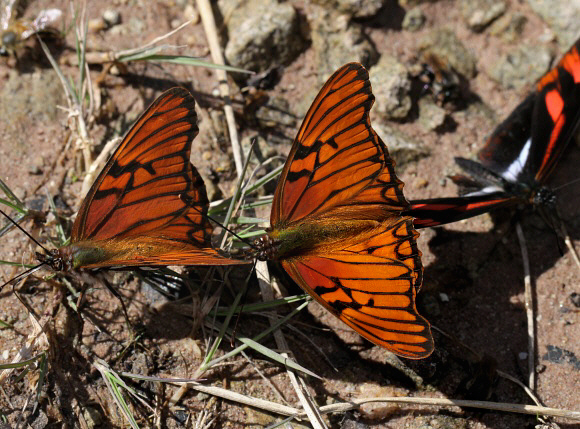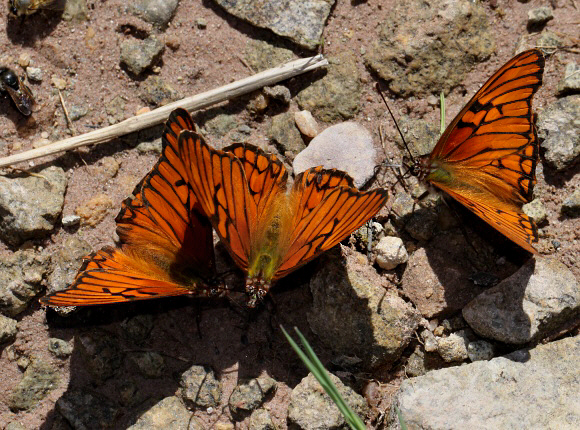 Dione glycera, Bosque She’llot, Peru – Adrian Hoskins
Dione glycera, Bosque She’llot, Peru – Adrian Hoskins
Introduction
The Heliconiinae was until a few years ago recently considered to be a full family equal in rank to the Nymphalidae, Satyridae, Papilionidae etc. In 1958 Erlich proposed that the families containing butterflies with only two pairs of legs should all be classified as subfamilies within the Nymphalidae. This proposition was again advanced by Ackery in 1984 and has since become accepted by most biologists. Thus we now have the Libytheinae, Satyrinae, Nymphalinae, Limenitidinae, Charaxinae, Apaturinae, Morphinae, Biblidinae, Ithomiinae, Danainae and Heliconiinae.
The higher classification of the Heliconiinae was revised by Penz & Peggie in 2003, being subdivided into the Acraeini, Argynnini and Heliconiini. The latter are colloquially known as Longwings and are characterised by their simple patterns, elongated forewings and delicate fluttering flight.
The Heliconiini includes the genus Heliconius ( 39 spp ), and the smaller genera Dryas, Dryadula, Eueides, Neruda, Laparus, Philaethria, Podotricha, Agraulis and Dione. The latter genus contains 3 species – glycera, juno and moneta – all with orange uppersides and silver-spangled undersides.
Dione glycera is distributed from Colombia to Venezuela, and south along the Andes to Peru.
Habitats
This species is found in cloudforests, and in scrubby areas above the tree-line, at altitudes between about 1600-3500m.
Lifecycle
The larvae feed on Passiflora ( Passifloraceae ).
 Dione glycera, Bosque She’llot, Peru – Adrian Hoskins
Dione glycera, Bosque She’llot, Peru – Adrian Hoskins
Adult behaviour
The butterfly is usually encountered singly, but males can sometimes be seen congregating in two’s or three’s at the edges of roadside ditches or small mountain streams. There they sometimes stay for 2 or 3 hours, imbibing large quantities of clear water from which they extract minerals that are passed to females via spermatophores during copulation.
